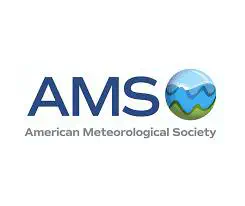Resolving Fine-Scale Lateral Water Transfers in Urban Environments Alters Regional Climate Simulations
 Image credit: AMS
Image credit: AMSAbstract
Urbanization substantially modifies surface water and energy fluxes at multiple scales. Compared to surrounding natural areas, low permeability urban surfaces produce more runoff and reduce evapotranspiration. Simultaneously, these urban surfaces retain more heat, creating the so-called urban heat island effect that spans from the ground surface into the lower atmosphere. Feedback among these processes can increase urban heat and rainfall and are further exacerbated by anthropogenic climate change. Current land-surface models (LSMs) used in regional climate simulations neglect fine-scale lateral exchanges of water that drive city-scale hydrology, and therefore also fail to capture key energy exchanges. Neglecting these exchanges limits the scientific community’s ability to examine the effects of climate adaptions, like green infrastructure, on not only hydrologic processes, but also on ameliorating urban heat island effects and feedbacks with the atmosphere. To this end, we present a new addition to the Noah-MP LSM, Noah-MP for Heterogeneous Urban Environments (Noah-MP HUE). Noah-MP HUE combines a mosaic tiling scheme to allow multiple land-types to influence atmospheric processes and explicit representations of fine-scale urban features including permeable pavements, extrinsic green roofs, impervious downspout disconnection, and vegetation canopy overhanging paved surfaces. To our knowledge, these latter two practices are not considered in any existing LSM or urban canyon model even though they are common interventions to naturalize the hydrologic cycle of cities. These land-types draw on the Noah-MP single layer canopy model, and thus represent more realistic vegetation processes in urban regions than other LSMs that only feature a mosaic scheme, like the Unified Noah LSM. We use Noah-MP HUE in high-resolution simulations centered on Milwaukee, Wisconsin to examine the importance of urban heterogeneity and lateral water transfers on the overall urban climate. Our results indicate that not only does better representation of urban vegetation and the associated lateral water transfers at the surface increase evapotranspiration and decrease sensible and ground heat fluxes within simulations, but also causes feedbacks that affect local processes like urban heat island development and land-sea breezes. We also compare our simulations with surface observations of air temperature and humidity collected in the Milwaukee area to illustrate impacts that fine-scale have on processes at multiple spatio-temporal scales. These results show that Noah-MP HUE will help inform management decisions aimed to maximize co-benefits of climate adaptions in a variety of urban regions outside of the presented study area.